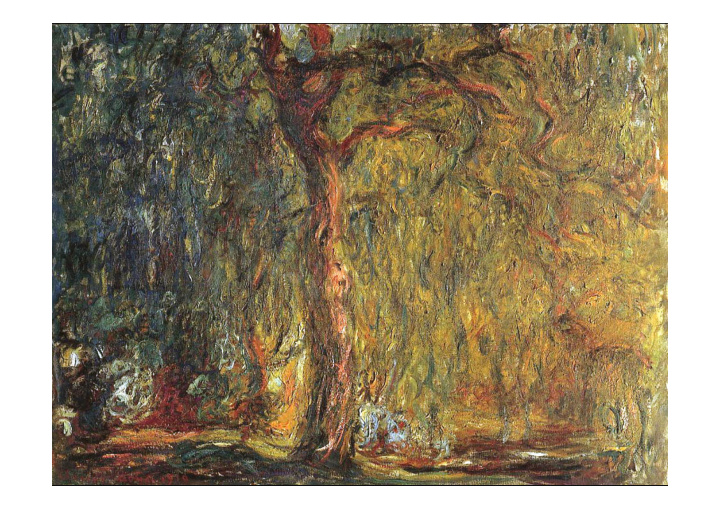



Feature-based alignment outline Extract features Compute putative matches Loop: • Hypothesize transformation T (small group of putative matches that are related by T )
Feature-based alignment outline Extract features Compute putative matches Loop: • Hypothesize transformation T (small group of putative matches that are related by T ) • Verify transformation (search for other matches consistent with T )
Feature-based alignment outline Extract features Compute putative matches Loop: • Hypothesize transformation T (small group of putative matches that are related by T ) • Verify transformation (search for other matches consistent with T )
2D transformation models Similarity (translation, scale, rotation) Affine Projective (homography) Why these transformations ???
Pinhole perspective equation NOTE: z is always negative..
Affine models: Weak perspective projection is the magnification. When the scene relief is small compared its distance from the Camera, m can be taken constant: weak perspective projection.
Affine models: Orthographic projection When the camera is at a (roughly constant) distance from the scene, take m =1.
Analytical camera geometry
Coordinate Changes: Pure Translations O B P = O B O A + O A P , B P = A P + B O A
Coordinate Changes: Pure Rotations
Coordinate Changes: Rotations about the z Axis
A rotation matrix is characterized by the following properties: • Its inverse is equal to its transpose, and • its determinant is equal to 1. Or equivalently: • Its rows (or columns) form a right-handed orthonormal coordinate system.
Coordinate changes: pure rotations
Coordinate Changes: Rigid Transformations
Pinhole perspective equation NOTE: z is always negative..
The intrinsic parameters of a camera Units: k,l : pixel/m f : m α , β : pixel Physical image coordinates Normalized image coordinates
The intrinsic parameters of a camera Calibration matrix The perspective projection equation
The extrinsic parameters of a camera
Perspective projections induce projective transformations between planes
Affine cameras Weak-perspective projection Paraperspective projection
More affine cameras Orthographic projection Parallel projection
Weak-perspective projection model ( p and P are in homogeneous coordinates) r p = M P ( P is in homogeneous coordinates) p = A P + b (neither p nor P is in hom. coordinates)
Affine projections induce affine transformations from planes onto their images.
Affine transformations An affine transformation maps a parallelogram onto another parallelogram
Fitting an affine transformation Assume we know the correspondences, how do we get the transformation?
Fitting an affine transformation Linear system with six unknowns Each match gives us two linearly independent equations: need at least three to solve for the transformation parameters
Beyond affine transformations What is the transformation between two views of a planar surface? What is the transformation between images from two cameras that share the same center?
Perspective projections induce projective transformations between planes
Beyond affine transformations Homography: plane projective transformation (transformation taking a quad to another arbitrary quad)
Fitting a homography Recall: homogenenous coordinates Converting to homogenenous Converting from homogenenous image coordinates image coordinates
Fitting a homography Recall: homogenenous coordinates Converting to homogenenous Converting from homogenenous image coordinates image coordinates Equation for homography:
Fitting a homography Equation for homography: 9 entries, 8 degrees of freedom (scale is arbitrary) 3 equations, only 2 linearly independent
Direct linear transform H has 8 degrees of freedom (9 parameters, but scale is arbitrary) One match gives us two linearly independent equations Four matches needed for a minimal solution (null space of 8x9 matrix) More than four: homogeneous least squares
Application: Panorama stitching Images courtesy of A. Zisserman.
Recommend
More recommend